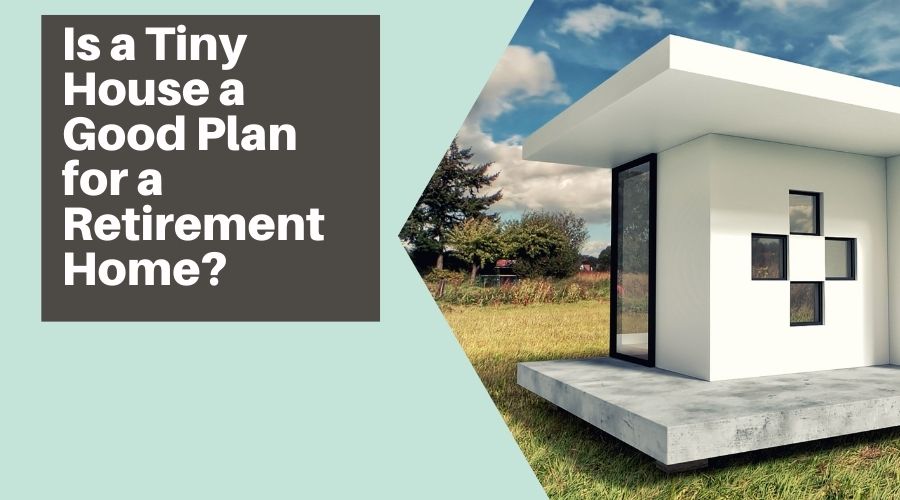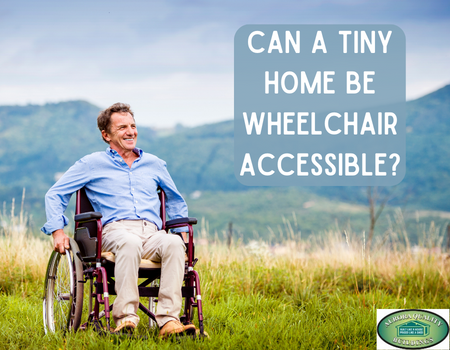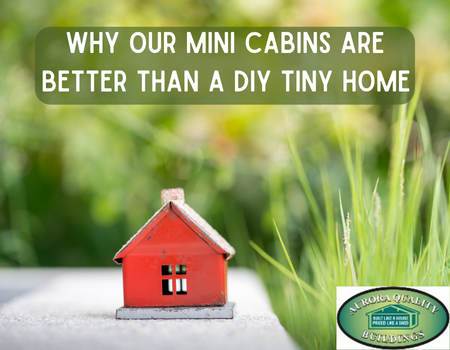Is a Tiny House a Good Plan for a Retirement Home?
Copy Link

The tiny house trend may seem like something only millennials that want to travel the world or use their money on experiences are interested in, but more and more of those nearing or in their retirement years are becoming intrigued by the possibility of living in a tiny home as a retirement home. Research has shown that a whopping 40 percent of tiny houses are actually lived in by older adults. Is a Tiny House a Good Plan for a Retirement Home?
How Tiny is a Tiny House?
The U.S. Census Bureau has reported that the average American home has been getting bigger and bigger over the years. The average home in 1973 was around 1,660 square feet and in 2013 that average number went up to 2,598 square feet.
The average tiny home is of course much smaller than this. A tiny home is not simply a smaller version of today’s large average-sized single-family homes. Tiny literally means tiny, some tiny homes are just 100 square feet. This is about the size of the average home’s master bathroom. Most tiny homes average at about 400 to 500 square feet though. This is a little less than one-quarter of the size of today’s average home.
Why Tiny Homes are Gaining Popularity for Retirement
Finances
Tiny homes are a very low cost way to downsize. Home equity is the largest source of wealth for many of America’s retirees. Cashing out on the equity in a current large or regular-sized home and moving into a tiny home allows those who retire and chose this path to have a nice nest egg put away to help pay for living expenses. Moving to a tiny home is the ultimate version of downsizing.
Upkeep
A tiny home requires the least amount of upkeep. The less home the less there is to repair and maintain and wear down with time. The less money, time, work, or hiring someone to do all the work there is.
Regrets some tiny home owners have
Lower Utility Bills
Tiny homes require much less of everything when it comes to utilities. Less water, less electricity, less effort to fill with heat or cool air, etc. This means a very large savings in monthly bills.
Less Stuff
Retirees are often advised to start getting rid of items that they no longer use in their homes. After years of raising a family or just accumulating stuff in a big home the idea of less stuff to care for and keep track of is highly appealing. Retirement is a very smart time to thin out stuff and live a more minimalistic lifestyle.
Related: Some folks buying second vacation homes before primary homes
Freedom
Since a smaller home is more simple it frees the owner up for giving their attention to other things they much rather be doing like hobbies, spending time with family, going out with friends, or traveling. Some people keep their tiny home mobile and travel everywhere with their home in tow.
For more information on great tiny retirement homes in Arlington and surrounding areas of Puget Sound contact us any time or come by and visit us in person.
More on Cabins
-
-
- 7 Ways a Custom Garage Can Improve Your Life
- Can I make a guesthouse in my backyard
- Is it Cheaper to Build or Buy a Shed?
- 10 Things to Consider When Buying an Outdoor Shed
- How Long to Wait to Swim After Shocking Your Pool
- 6 Tips for Organizing a Storage Shed
- Do you need to paint a custom-built shed?
- How to Create and Organize the Perfect Backyard Shed
- Making the Most Out of Your Man Shed
- 4 Characteristics of a High-Quality Shed
- 5 Tips for Choosing the Right Size Shed
- He-Sheds are All the New Rage for Man Caves
- Do You Have to Pay Property Tax on a Shed?
-


